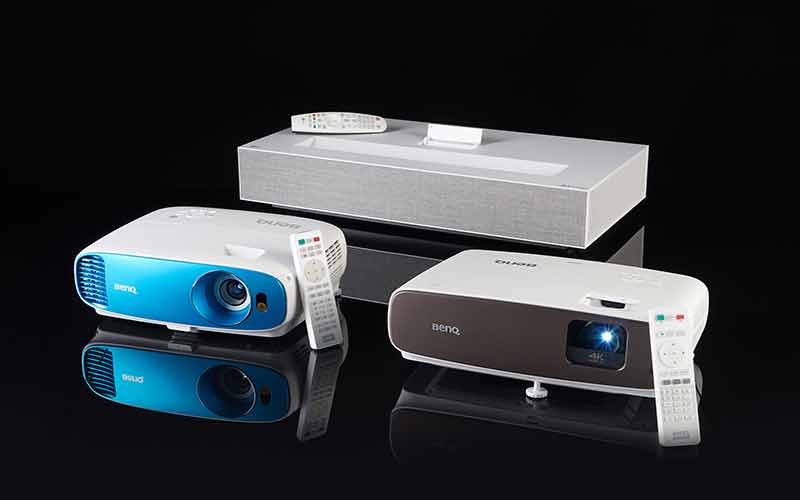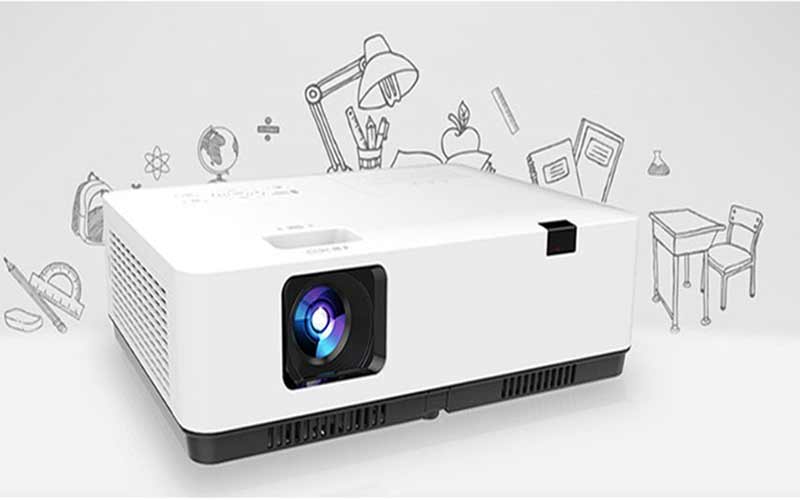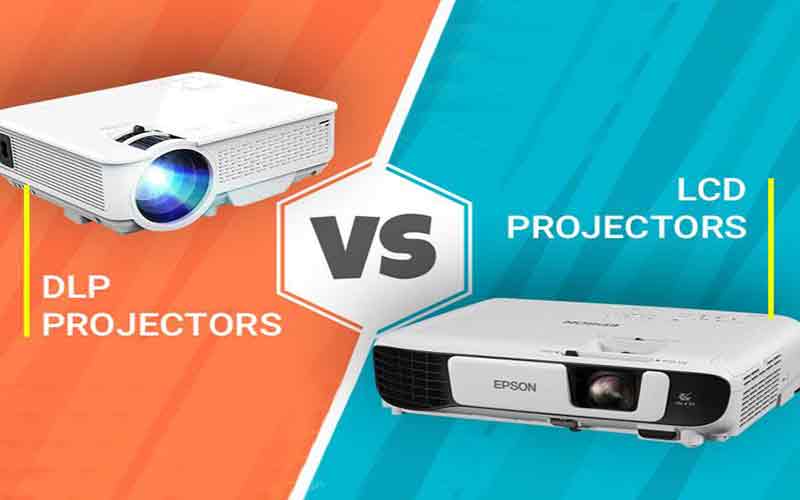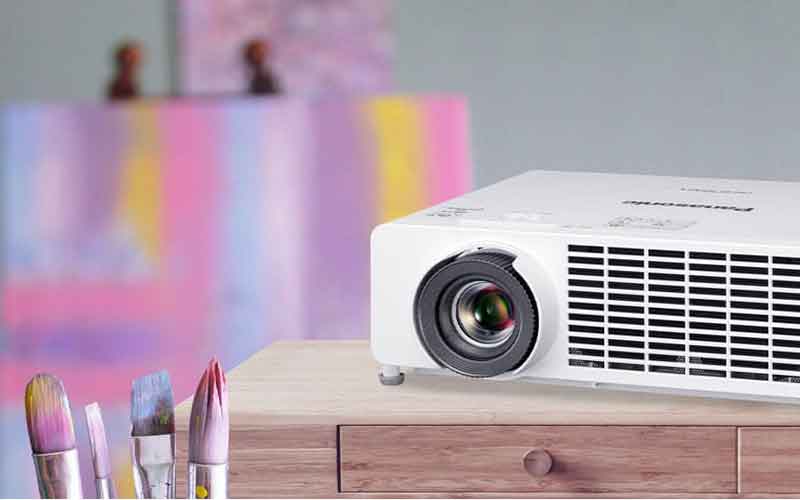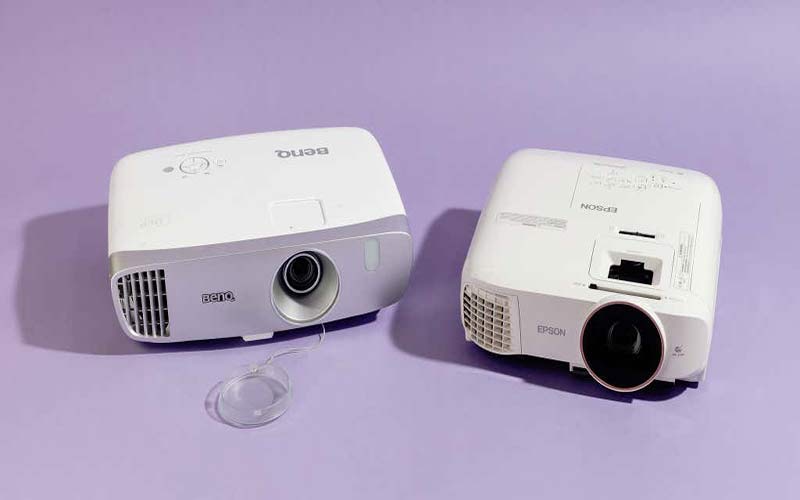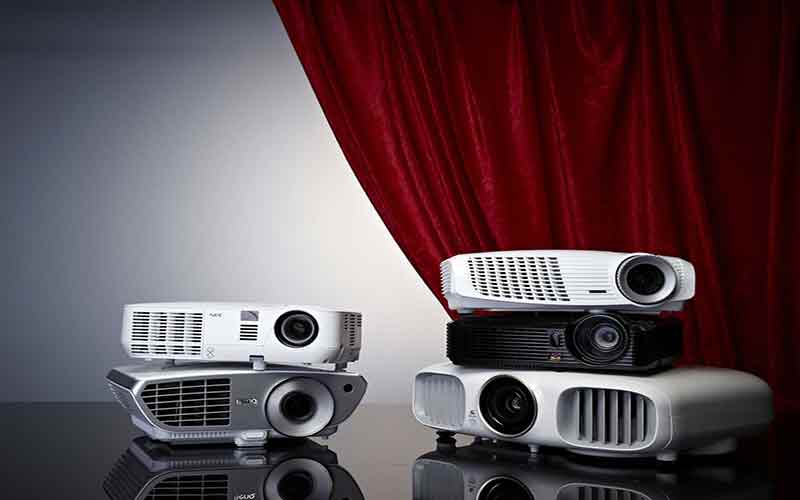Table of Contents
Have you heard about LCD? Of course, you have. In the world of gadgets, LCD has become popular among laptops, TVs, projectors, and even watches. So, should you get an LCD projector whose technology is somewhat familiar?
What about DLP projectors? They are more recent and are raved about by many. Many companies offer both DLP and LCD technologies. Which one should you get? This debate is taken up by many and never won by one side. Each projector has its pros and cons.
You may be wondering about LED projectors too. Is LED a different display technology? How does this work? We will answer all your queries and will try to keep this article as jargon-free as possible.
Read on to know who wins this LED vs. LCD vs. DLP projectors comparison. In the end, we’ll guide you about choosing your projector type out of these three.
What is an LED projector?
Let’s start this discussion with the simplest one. Do you think that LED is a different display technology? Well, you are wrong here.
LED is actually the light source or lamp in a projector. Each projector comes with a powerful light source to project an image. This light can come from a metal halide lamp, UHP lamp, laser, or LED in this case.
LED means light-emitting diode. In a projector, we use three LEDs, each of one primary color. Here the process used is semi-conduction. The electrons combine with the electron holes, and the excess energy is released in the form of light.
If it got too complicated, let’s simplify. The current passes through the microchips in the device. They light up the LEDs and produce three different colors.
This light is then reflected on to the LCD or DLP panel. The rest of the process depends on your particular projector. Read on to know what happens inside an LCD and DLP projector.
Do you know why one prefers LED vs. LCD projector? LED projectors use lower energy for producing the same brightness. LED lamps get a luminous efficacy of 200 lumens per watt. Moreover, there is little heat production.
Advantages of LED vs. LCD projectors:
- Compact size for use in pico projectors
- Lower heat output so no fan is required
- Longer lamp life up to 60,000 hours
- Turns on and off in an instant
- Quieter projector due to lack of a fan
- Do not burn out or fail, but they get a decline in brightness over time
- No lamp replacement cost
Disadvantages of LED vs. LCD projectors:
- The luminous output is lower than LCD and laser DLP projectors. The maximum brightness level they can achieve is 3,000 to 3,500 lumens.
- Lower resolution than LCD projectors.
What is an LCD projector?
LCD is the Liquid Crystal Display technology used in TVs, and laptops, etc. You probably knew that already. Let’s get into the mechanics behind the projector.
Firstly, you have a powerful light source. In the LCD projectors, this source is a metal halide lamp. This is the difference between LCD vs. LED projectors.
The light from the source transmits to the 3 mirrors. These dichroic mirrors have unique shapes to reflect only a certain wavelength of light. So basically, you get three light beams of the three primary colors.
These light beams each pass through a prism to get to the 3 LCD panels. Here the electrical signal comes to help arrange the image. So, three separate images, each with a dominant color tone, are formed at this point.
A second prism converges them into a single image. The final picture has 16.7 million colors. Finally, the lens projects this image on the screen.
Do you know that the LCD projector transmits light instead of reflecting it?
Advantages of LCD vs. DLP projectors:
- They can zoom in and have a better focus. You can align your image with the lens shift if you cannot move the projector much.
- They cost lower than DLP projectors
- More light efficiency and better color saturation
- They use lower power and dissipate less heat than DLP projectors
- More brightness
- Quieter than DLP
- No rainbow effects
Disadvantages of LCD vs. DLP projectors:
- Larger and heavier than LED projectors
- Screen door effect
- Blacks are more gray than black
- Shorter life of the LCD vs. LED
- Pixelated image with lower color uniformity
- The image quality deteriorates over time
- Lower contrast than DLP
What is a DLP projector?
DLP projectors are more recent than LCD projectors. However, are they better than LCD? This is still to be seen. DLP stands for Digital Light Processing. They reflect light in DLP vs. transmitting it in LCD.
Do you know that the light source in a DLP projector can be a metal halide or xenon arc lamp, an LED, or a laser? So, that means a DLP projector can be an LED one too.
They are unlike the LCD projectors that come with 3 LCDs only. DLP has both a single chip and three-chip technology. Let’s look at the single-ship first.
The light from the source passes through a spinning color wheel, which adds the three primary colors. Then, it passes beneath the lens and reflects from a mirror. Finally, it reaches the DMD (Digital Micro-mirror Device). This is the main component of DLP.
The DMD has two million tiny mirrors on it. Each mirror can move toward or away from the light source to produce a lighter or darker pixel. From the DMD, the light goes to the lens to form an image. Some extra light gets absorbed in the sink after reflecting from the top.
Do you want to know what happens in the 3-chip DLP? Here instead of a single DMD chip, there are three. So, the light from the source passes through the prism to get into three beams.
Each passes through a different portion of the spinning wheel and gets a primary color. The colored beams go to three chips and form three images. So, 3-chip DLP has 35 trillion colors vs. 16.7 million colors of LCD.
The three images merge into a single one after passing through the prism. Did you know that this technology is the same that is used in digital cinema projection?
Advantages of DLP vs. LCD projectors:
- Low maintenance as there are no filters to clean
- Smooth image quality without visible pixels
- Better contrast than LCD projectors
- Mirrors produce a higher light output
- No light loss
- Deeper blacks
- Compact and portable for use as pico projectors
- No screen door effect
Disadvantages of DLP vs. LCD projectors:
- Dimmer than the LCD projectors
- Rainbow effect
- More moving parts that are prone to damage
- Audible whine
- The red and yellow hues are not fine
Which one is better: LED vs. LCD vs. DLP Projector?
Now, coming to the main point. So, after knowing all the different technologies, which one should you choose?
DLP projectors are for travelers. You’ll like their portability when you want to carry the projector around, for meetings or presentations, or for road trips.
The film buffs will also appreciate them. Their dynamic black, higher contrast, and low pixelation are preferable by them. However, the rainbow effect is their downfall.
We recommend LCD projectors for those living in remote areas where you cannot find service. They are without any moving parts and are less likely to damage. Their better image quality and luminous efficiency are our favorite.
If you want to use lesser power, try LCD. You’ll prefer them if you have a fixed position for your projector. Beware of the screen door effect and dead pixels, though.
However, we cannot choose one from DLP vs. LCD projectors. They both cater to a different audience.
Now, coming to the LED projectors, we prefer them for travel. They work well as pico projectors, for smaller spaces, and for offices and classrooms. You don’t need high brightness here. Moreover, you get quieter, energy-efficient projectors, with longevity, and in a compact size.
Conclusion:
We are sure you’ll know by now that you cannot conclude the best projector from the LED vs. LCD vs. DLP. However, you know about their inner working, and you can make an informed decision.
LCD and DLP are display technologies, each with its pros and cons. LED projectors will offer only limited brightness.
However, to solve these issues, there’s an emerging 3LCD reflective technology. This is found in LCoS, LCoQ, and SXRD. It gets rid of both the rainbow and the screen-door effect.
We recommend knowing your requirements before making the decision. The projector that may be best for another might become a poor choice for you.
Related Article :

